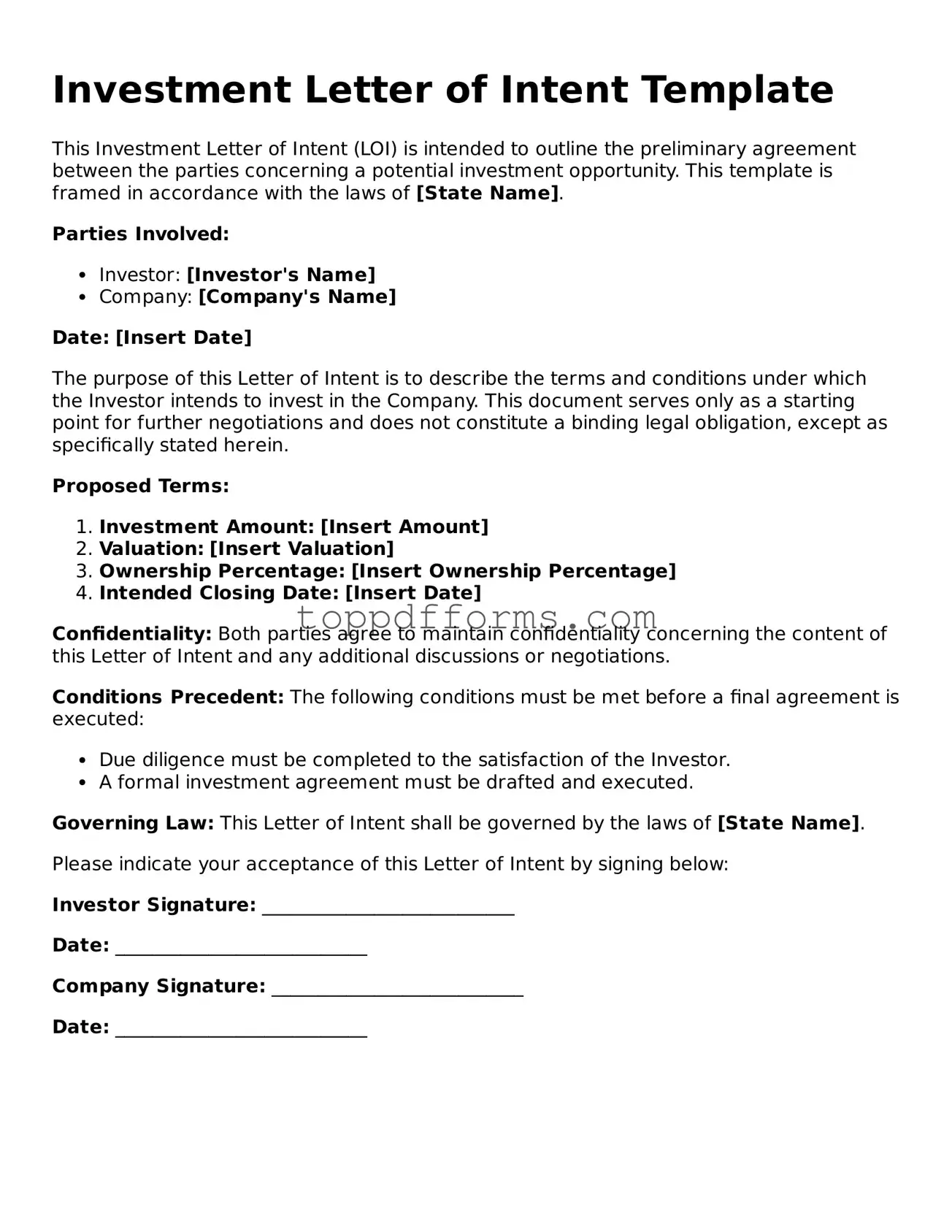What is an Investment Letter of Intent?
An Investment Letter of Intent (LOI) is a document that outlines the preliminary understanding between parties who intend to enter into an investment agreement. It serves as a starting point for negotiations and helps clarify the intentions of both the investor and the recipient of the investment. The LOI is not legally binding but indicates a serious commitment to move forward with the investment process.
Why is an Investment Letter of Intent important?
The Investment Letter of Intent is important because it sets the stage for the investment process. It helps both parties align their expectations and outlines key terms, such as the amount of investment, the structure of the deal, and any conditions that must be met. This clarity can prevent misunderstandings later on and streamline the negotiation process.
What information should be included in an Investment Letter of Intent?
An effective Investment Letter of Intent should include several key components. These typically consist of the names of the parties involved, the amount of investment being proposed, the purpose of the investment, any conditions or contingencies, and the timeline for completing the investment. Additionally, it may outline confidentiality agreements and any exclusivity arrangements.
Is an Investment Letter of Intent legally binding?
Generally, an Investment Letter of Intent is not legally binding. It is primarily a tool for negotiation. However, certain sections, like confidentiality or exclusivity clauses, can be binding if both parties agree to them. It’s essential to clearly indicate which parts of the LOI are intended to be binding and which are not.
How does an Investment Letter of Intent differ from a formal investment agreement?
The main difference lies in their purpose and detail. An Investment Letter of Intent is a preliminary document that outlines the basic terms and intentions of the parties involved. In contrast, a formal investment agreement is a comprehensive contract that includes detailed terms, conditions, and obligations. The LOI serves as a roadmap leading to the more formal agreement.
What should I do after signing an Investment Letter of Intent?
After signing an Investment Letter of Intent, both parties should begin working on the due diligence process and drafting the formal investment agreement. This is the time to gather necessary documentation, clarify any outstanding issues, and negotiate the finer details of the investment. Maintaining open communication throughout this phase is crucial to ensure a smooth transition to the formal agreement.
